After Dalby, we headed further north. The countryside to the west was now really flat.
We were rather surprised to see an old fashioned rocket climbing frame in a park in one small town. A blast from the past. You don’t see many of those around these days.
We stopped in the small town of Jandowae to stretch the legs.
Once again, some nice old buildings.
That is one huge bottle tree.
This old pub had murals all the way around.
There was a small historical precinct beside the creek.
This sculpture, including some of the original fence, is to commemorate the Dingo Fence that starts near here and runs all the way to South Australia
. We saw some of the fence near Coober Pedy in South Australia when we visited there in 2022.
Our destination for the day was Gayndah, Queensland’s oldest town. It was settled in the 1840s by graziers.
We were here as we had a special mission. I have historic family connections to the area and we have an early framed photo of Gayndah’s first ambulance. It doesn’t mean anything to us, so we took it up to donate to the museum.
While in town we had a nice look around. I haven’t really visited since I was a teenager.
Gayndah is situated on the banks of the Burnett River, which looks rather innocuous at present, but can be a rather large flood at times. The last major flood was in 2013. The museum had about four feet of water through its main buildings and even more through the vintage machinery shed. They lost a lot of precious items and documents, which must have been devastating.
The very rare prehistoric
lung fish is only found in this river in Australia. There are a couple of juveniles in a fish tank at the museum as well as this model. The real ones were pretty hard to see, as they were sitting on the bottom of the tank.
Of course we had a look through the museum while we were there. It is located in a nice little row of historic buildings. The brick cottage dates back to 1864, while the timber cottage is part of a local homestead that was relocated to the site in the 1970s.
Over the road there is a second old homestead that was relocated to the site in 1999.
Here are a few of the interesting items.
Mick was taken with the Douglas motorcycle, which is the exact same model that he used to own.
I was intrigued by the dies for making leather Winkers for horse harnesses. Things you have never considered.
There was quite a display about the early attempts to eradicate the dreaded prickly pear, prior to the introduction of the cactoblastis moth. No wonder they were facing a losing battle, just stabbing the plants and injecting arsenic into them.
There was a nice display in the bedroom.
Some family members are listed on this honour roll for their involvement in WWI and WWII.
Gayndah has been a major citrus growing area from its early days and there were a few early items on display. I found them interesting, as my grandparents were apple orchardists and I used some of these items when I was a child.
It’s not a very clear photo, but this is a fruit grader. The fruit is fed onto a conveyor and as it rolls along there is a tapered roller that lets the fruit fall into troughs according to size. From there it is packed by had into cases or cartons. The only difference is that our family one had solid bases on the troughs, rather than canvas.
It was great fun to staple the cardboard cases and lids together on the giant stapler.
There was one of these old spray carts rotting away under a pine tree down at Grandma’s. Yes, it would have been used for the dreaded DDT back in the day.
Over the road was the machinery shed. Remember that flood I mentioned? It went up to about Mick’s head height. They are still trying to work their way through cleaning up the internals of some of the gear in there.
Once again, some interesting old items.
We were rather taken with the windmill parts, as Challenge windmills are rather rare in Australia. We used to have beside our dam when we lived out of town.
By then were were just about museumed out and it was time for a milkshake. There is nothing better than an icy cold milkshake from an old fashioned country cafe.
Gayndah has a rather famous store which is heritage listed and has the only operating flying fox change dispenser. I even have a souvenir tea towel from there that I bought many years ago. However, we were saddened to see that it is now closed. What a shame. It seems that the owners sold the business and retired in 2022 and the new owners closed it in 2023. It would be wonderful if someone could revive it in the future.
It was now that we were starting to seem some beautiful old Queenslander houses.
Here are a few other buildings in the main street.
We wondered at the sculpture of a Chinese man by the river. It turns out that many Chinese came to the area as shepherds, of all things.
We overnighted at the old railway precinct that is now run by a band of keen volunteers. The set up for camping is well set out and for a minimal price.
It was a beautiful clear night. See the tiny moon?
Each morning one of the volunteers gives a talk about the area and what they have achieved since their inception in 2017.
The railway was officially opened in Gayndah in 1907, running three trains a week to Maryborough. The last train left for Maryborough in 2008, never to return. The line was officially closed in 2013.
Their prize possession is a couple of carriages from the Sunlander train that ran from Brisbane to Cairnes from 1953 to 2014. It was quite an exercise to deliver the carriages to their current site. The group have received some grants to assist towards their purchase and delivery as well as to build the shed to protect them. This is an ongoing project, hoping to extend the shed to cover the second carriage.
Firstly, we entered the Club Car and were all surprised at how well appointed it was. This carriage is sometimes used for small functions.
The second carriage was the dining car.
Standing beside these carriages are a sleeper car, in original complete condition and a guards van. They plan to set up a museum in the guards van and open the sleeper car in due course. It was a great place to stay.
No visit to Gayndah is complete without a visit to the Big Orange.
Inside the orange there is a great display of fruit box labels from the district, paintings of local birds and some historic photos. There is a cafe on site, but we had just finished breakfast, so kept on our way.
We did call in at a quirky roadside stall to buy some juicy mandarins. So good.
Back on the road there was more lovely scenery.
A painted silo for Three Moons Creek.
We had lunch at the town of Monto. It is a fairly small town, but remarkably vibrant. We were speaking with one local who said that since COVID you are struggling to buy a house in town, whereas before you couldn’t sell one.
The Monto area was first settled in the 1840s, but the town itself wasn’t officially recorded until 1924, so they are celebrating their centenary this year.
This sculpture is of Monto’s first doctor. Yes a lady doctor. It was hard to recruit rural doctors back then too. She arrived in 1926 as a 23 year old, and travelled in a cart as it was easier to traverse the black soil in wet weather than a car.
There are a couple of lovely murals down a little lane.
And another to commemorate an old pub that has since burnt down and its popular publican.
Anyone would think that I like old buildings in country towns.
The Hotel Albert
The very art deco Shire Council Chambers and Concert Hall.
And I love the blue and white timber CWA halls that are found all over Queensland.
That’s enough for today. Our next stop deserves a post of its own.







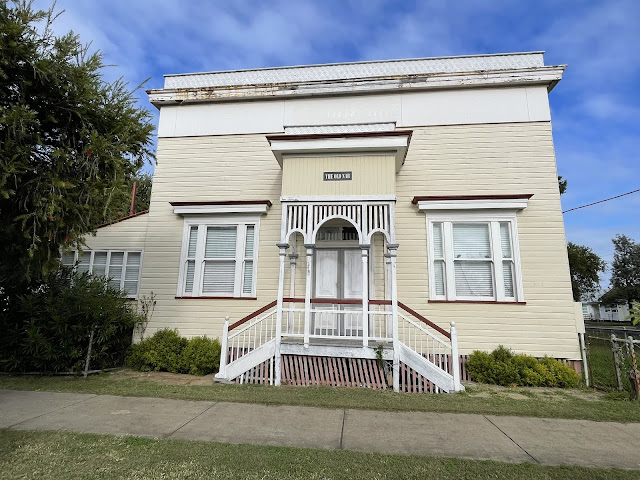
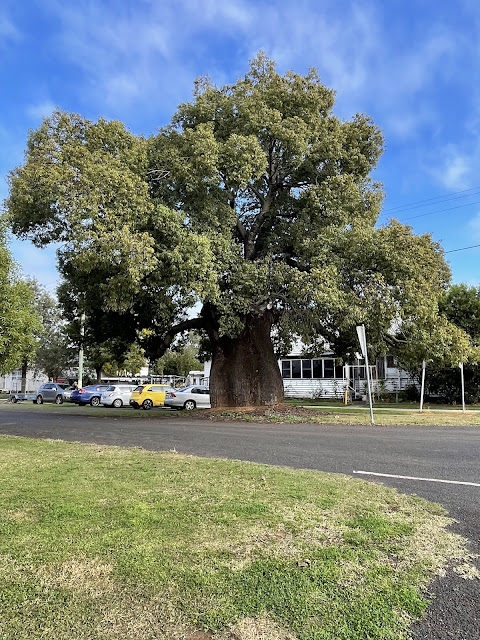








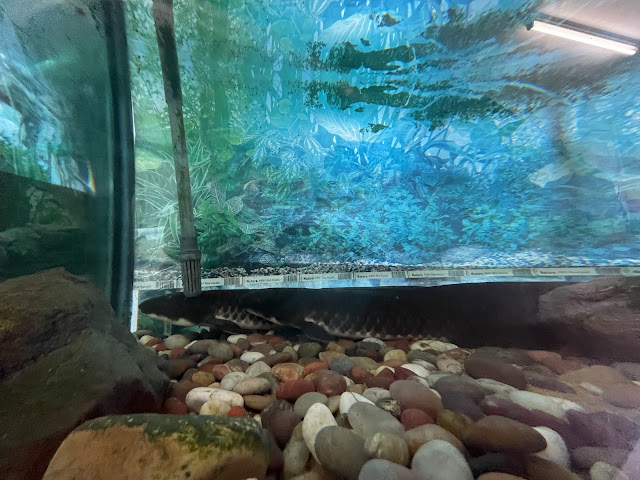

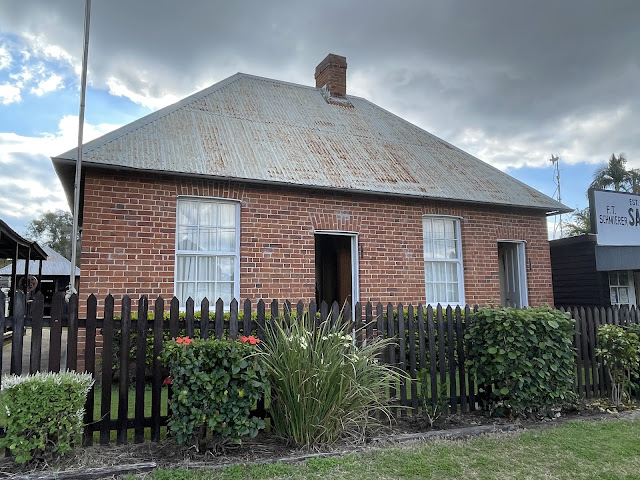





























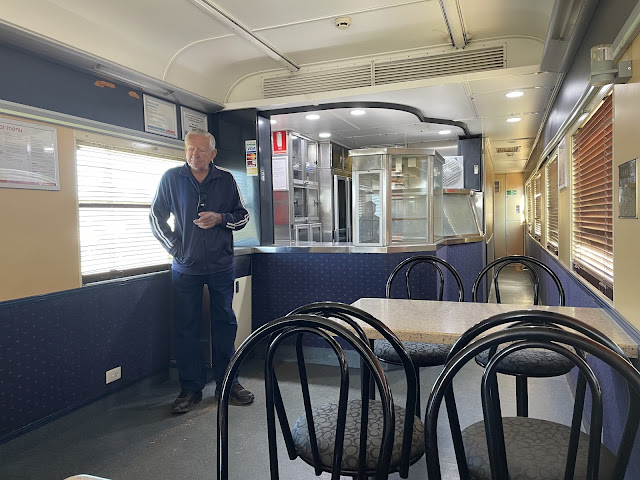




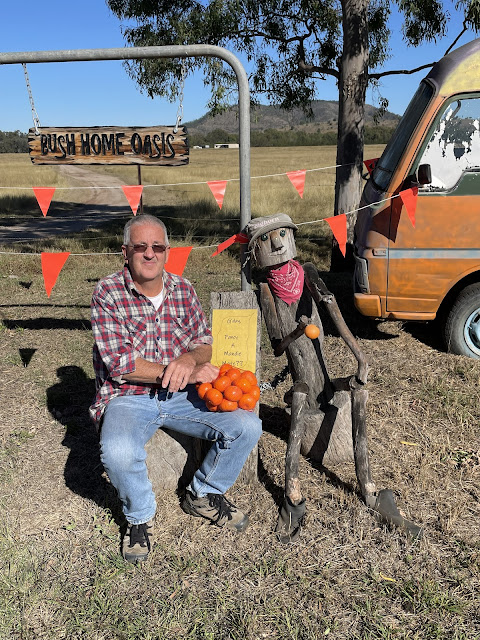

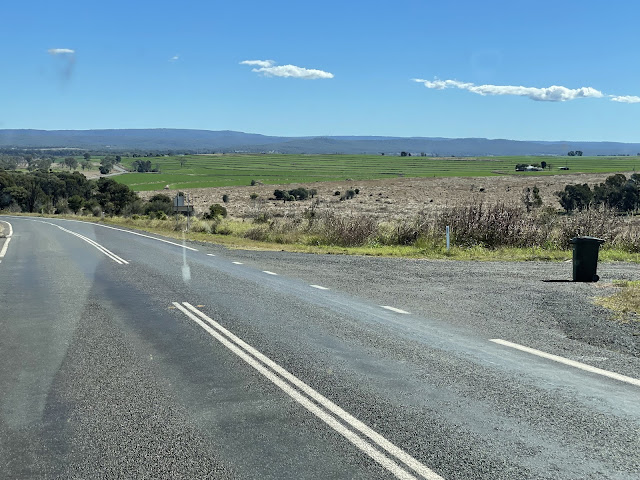

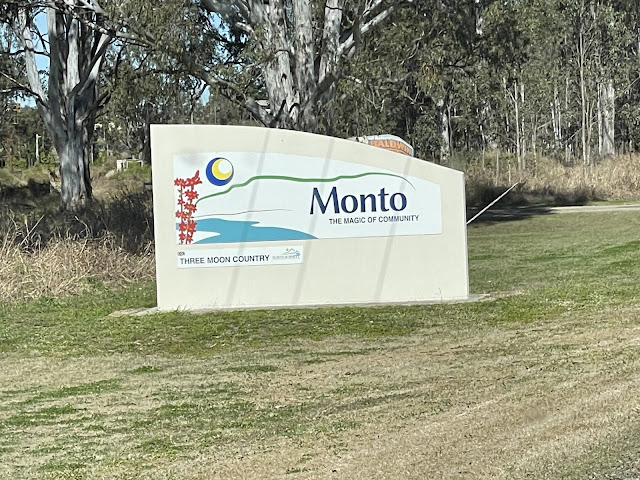



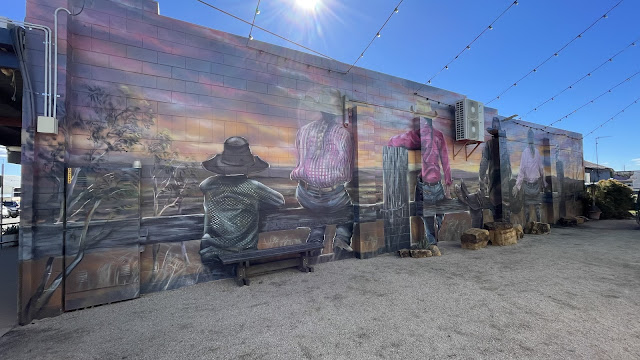





Some people think that life outside the big cities is dull - not so; there is an amazing amount of interesting life out there! Thanks for taking us along on your trip.
ReplyDeleteoh my what a trip! i enjoyed every km...lovely murals, lovely architecture and old building designs...lots of quirky vintage stuff...thanks for taking me along
ReplyDeleteAnother absolutely "WOW" post & what is wrong with loving our old buildings/houses etc? I do too & we must talk about apple growing one day, as we've lived in both Batlow & Tassie. Two places known for apples. Thanks for all the great photos & info, take care & hugs.
ReplyDeleteYes indeed, anyone would think that! Like you, I always enjoy seeing the beautiful colonial garments on display. And the wonderful painted silos that you find in so many places, Australia really has so many wonderful examples of these silos. Not so many painted silos here in New Zealand so it's always a treat when we discover one.
ReplyDeleteLovely to read - and to see. My grandparents also were fruit farmers - apples and pears and I remember a similar grading system...
ReplyDeleteHugz
The train looks pretty fancy!
ReplyDeleteLove the metal China man with the buckets. There are just all kinds of artists. I suppose we are quilt artists.